There are seven main types of golf clubs: Driver, Fairway Woods, Irons, Hybrids, Wedges, Putters, and Chippers. Each category serves distinct functions on the course.
Golfers of all skill levels recognize that a well-stocked golf bag is crucial for playing at their best. Choosing the right types of golf clubs, from powerful woods for long shots to precise putters for the green, can greatly improve your game.
Irons, available in different lofts and shaft lengths, are crucial for many shots, whether you need distance or precision. Hybrids offer versatility and can replace long irons, making challenging shots easier. Wedges are vital for short-distance play, especially near the green where control is paramount.
Lastly, the putter is the most used club, integral for rolling the ball into the hole with accuracy. To lower your strokes and improve your performance, it’s important to understand the purpose and proper use of each club type.
The Importance Of Club Selection In Golf
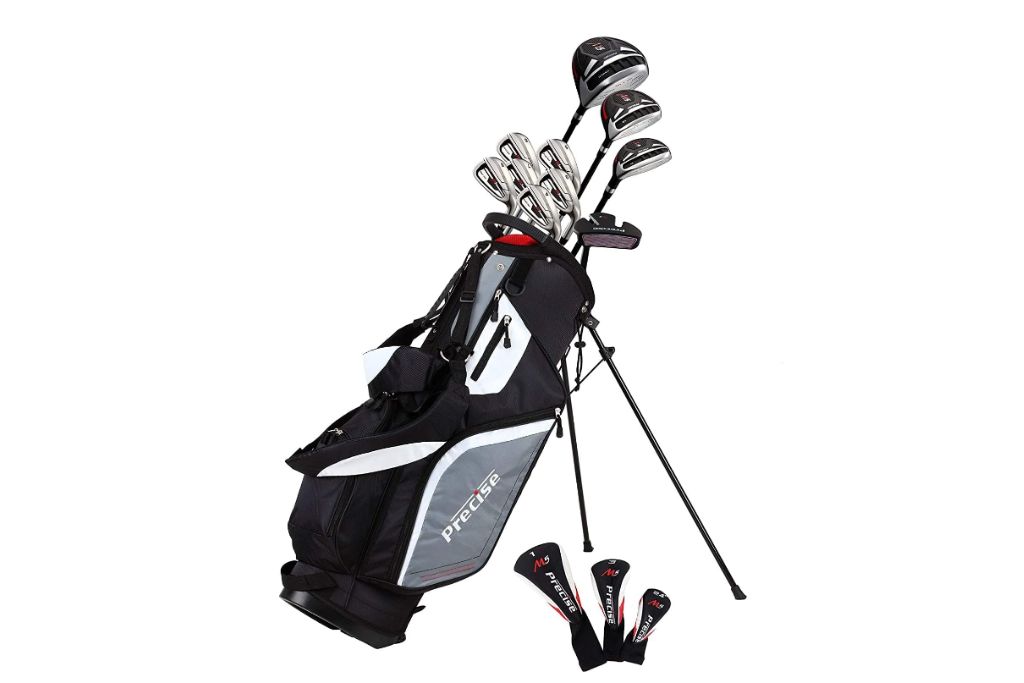
Selecting the best types of golf clubs is crucial for every golfer. Different clubs serve different purposes on the course. A good choice can lead to lower scores and improved play.
A poor selection, on the other hand, can put a golfer at a disadvantage. Knowing the different types of golf clubs and when to use each one can greatly improve your performance.
Factors Affecting Club Choice
- Distance to the Hole: Longer clubs for longer distances, shorter clubs for shorter distances.
- Weather Conditions: Wind speed and direction can influence club selection.
- Course Layout: Club choice varies with different course obstacles and terrain.
- Shot Type: Choose clubs based on the required shot (e.g., chip, pitch, drive).
- Golfer’s Skill Level: Players select clubs based on their playing abilities.
Impact On Gameplay And Score
Selecting the appropriate club affects every aspect of a golfer’s game. The right types of golf clubs can lead to better accuracy, distance, and lower scores. Here’s how:
| Club Selection | Gameplay Impact | Score Impact |
| Driver | Maximizes distance on long fairways | Fewer strokes needed to reach the green |
| Iron | Provides precision on approach shots | Enhances chance for birdie or par |
| Wedge | Manages short game and bunker shots | Improves control around the greens |
| Putter | Enables accurate cutting | Reduces the number of putts per round |
With each club playing a pivotal role, successful golfers pay close attention to the right types of golf clubs. This strategic approach leads to more consistent play and the opportunity for a better scorecard. Indeed, you cannot overstate the power of selecting the right club in golf.
Woods: Powering Your Long Game
Golfers know the game’s heart lies in mastering the long game. Woods are golf clubs designed to cover those impressive distances. With a wood in hand, each swing has the power to span vast stretches of the fairway. Let’s explore the types of golf clubs of woods that help turn beginners into seasoned players and seasoned players into masters of the course.
The Role Of Drivers
The driver, often referred to as the 1-wood, is a staple in any golfer’s bag. It provides speed and distance, making it perfect for that first powerful shot off the tee. With a large head and a long shaft, the driver packs a punch, propelling the ball to its maximum distance down the fairway. Key features include:
- Large sweet spot for more forgiveness on off-center hits
- Aerodynamic design to reduce drag and enhance swing speed
- Varying loft angles to fit different playing styles and conditions
Fairway Woods Varieties
Once past the tee shot, golfers turn to fairway woods. These clubs come in handy for long shots that still need to cover considerable distances.
Unlike drivers, fairway woods boast a higher loft, making launching the ball high into the air easier. This feature is crucial for shots that need to soar over obstacles. Some popular fairway woods include:
| Fairway Wood | Typical Loft | Use Case |
| 3-wood | 15-18 degrees | Long shots from the fairway or tee |
| 5-wood | 20-22 degrees | High-launching shots from various lies |
| 7-wood | 22-24 degrees | Alternative to long irons, easier to hit |
Woods are not just about the 3 and 5 varieties. Higher-numbered woods, like the 7 or 9, offer even more loft and control for tailored situations. Golfers might opt for these clubs when they need a softer landing on the green from a long approach shot.
Irons: Precision And Control
Among various types of golf clubs, irons play a crucial role. Golfers rely on irons for precision shots and better control. Different types of irons suit different parts of the game. They help golfers to nail the perfect shot on the fairway or approach the green.
Long, Mid, And Short Irons
The iron category includes long, mid, and short irons. Each range helps with specific distances.
- Long irons (2-iron to 4-iron): These are challenging to hit but excellent for long shots.
- Mid irons (5-iron to 7-iron): Perfect for moderate distances and more control.
- Short irons (8-iron to pitching wedge): Used for precision and accuracy for shorter approaches.
Understanding Iron Loft Angles
Logically, as the iron number increases, the loft angle goes up too. Loft angles greatly affect the height and distance of a shot. Here’s how they work:
| Iron Number | Loft Angle | Typical Use |
| 2-iron | 18°-20° | Long shots with a lower trajectory |
| 5-iron | 23°-27° | Medium-range shots |
| 9-iron | 41°-45° | Short, high shots with more control |
Selecting the right types of golf clubs of iron with the ideal loft angle is essential for strategic play. It enables golfers to make informed choices on the course for the best outcomes.
Hybrids: The Best Of Both Worlds
Hybrids offer a unique solution in golf, blending the ease of wood with the precision of an iron. These clubs can improve your game in assorted terrains. From the fairway to tricky roughs, hybrids provide an essential tool for golfers looking to enhance their play.
Replacing Long Irons with Hybrids
Long irons are often a challenge, even for seasoned golfers. Hybrids stepping in can mean a game-changing shift. This replacement brings easier hits and greater forgiveness on off-center shots. See the benefits outlined below:
- Better control at varying speeds
- Higher launch angles
- More consistency in shots
- Increased confidence across various lies
Hybrid Versus Wood: A Comparison
Selecting between a hybrid and a wood depends on your situation. Each has its applications:
| Features | Hybrid | Wood |
| Distance | Competitive | Longer |
| Precision | Higher | Lower |
| Forgiveness | More | Less |
| Use in Rough | Easier | Harder |
| Launch | Easier | Variable |
Hybrids blend distance and precision better than most woods. They often offer a safer option in difficult lies. For that reason, many golfers are adding hybrids to their bags. They find that hybrids strike a balance that lets them play with greater ease and confidence.
Wedges: Your Short Game Arsenal
Every golfer knows the short game holds the key to an impeccable scorecard. Among the most vital clubs in this phase are wedges. Each wedge serves a unique purpose, assisting in various situations on the course. They help in getting the ball out of tricky spots and close to the hole.
Pitching Wedge Nuances
The pitching wedge is often your go-to for precise shots, giving you control in various situations. Ranging from 44-49 degrees loft, this wedge ensures your ball lands softly on the green. Its uses include:
- Full swings from the fairway
- Approach shots
- Chip shots onto the green
Sand Wedge And Lob Wedge Distinctions
The sand wedge shines in the bunkers. Sporting a loft between 54-58 degrees, it plows through sand, ensuring your ball escapes gracefully. Essential features include:
- Wide soles for sand play
- Heavier head for momentum
On the other hand, the lob wedge offers the highest loft, typically 58-64 degrees. Use it when you need to:
- Lift the ball high quickly
- Clear obstacles
- Land with minimal roll
Putters: Mastering The Greens
Every golfer knows that a putter is crucial for scoring. The right putter can make all the difference on the greens. Putters come in various head designs and lengths. Finding the one that feels right can help sink more putts.
Putter Head Designs
Choosing a putter head design is about personal preference and stroke type. There are two main categories.
- Blade Putters: Great for a smooth, straight stroke.
- Mallet Putters: Offer more forgiveness on mishits.
Perimeter-weighted designs help with off-center hits. Players should try different styles to see which works best for their game.
Choosing The Right Putter Length
The right putter length is key for a comfortable stance and accurate stroke.
| Player Height | Suggested Putter Length |
| Under 5’5″ | 32″-33″ |
| 5’5″ to 5’9″ | 34″ |
| 5’10” to 6’2″ | 35″ |
| Over 6’2″ | 36″ and up |
Stand in a putting stance to find your ideal length and let your arms hang naturally. Your hands should be directly over the ball.
Custom Golf Clubs: Tailored To Your Swing
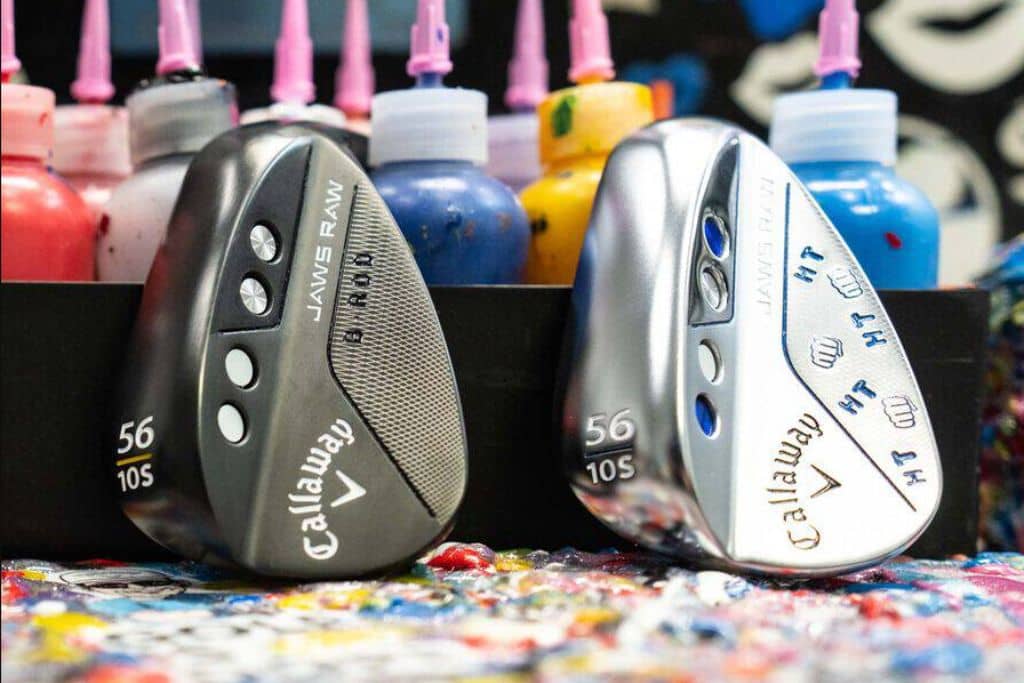
Imagine stepping onto the golf course with a secret weapon: clubs that fit your unique swing like a glove. Custom types of golf clubs are not just a luxury; they are a game-changer for players at all levels. With a set designed just for you, you can improve your accuracy, distance, and overall performance.
Benefits Of Custom Fitting
Custom types of golf clubs offer several key advantages:
- Improve accuracy: Clubs that match your specifications can enhance your shot precision.
- Enhance comfort: Tailored grips and shafts mean a better feel in your hands.
- Increase distance: The right club length and flex can add yards to your drives.
- Lower scores: Better clubs lead to better play and thus to lower scores.
Process Of Personalizing Clubs
The journey to personalized types of golf clubs involves several steps:
- Interview: A specialist discusses your style, strengths, and weaknesses.
- Swing Analysis: Hi-tech tools track your swing to suggest the right club specs.
- Club Selection: Tests determine the best head, shaft, and grip combinations.
- Fitting: A pro checks the club’s length, lie angle, and shaft flex to fit your posture and swing.
- Building: The clubs have been assembled to match your exact specifications.
- Final Adjustments: After testing, minor tweaks ensure perfect club performance.
Golf Club Materials: Make And Performance
Golf clubs come in varied shapes, sizes, and materials. Each material impacts how types of golf clubs perform. Golfers choose materials based on play style, comfort, and the club’s function. Let’s dive into the materials that make these tools and how they affect your game.
Steel Versus Graphite Shafts
Golf club shafts mainly come in steel or graphite. Both have unique benefits on the course.
- Steel Shafts: These are robust and offer greater accuracy. Players with a strong swing often prefer steel. They usually last longer too.
- Graphite Shafts: These shafts are lighter, helping increase swing speed. They add distance and are easier on the arms. Beginners and seniors often pick graphite.
Head Material Effects On Ball Flight
The material of a club’s head changes how the ball flies. Weight and hardness play big roles here.
| Material | Characteristics | Ball Flight |
| Titanium | Lightweight and strong | High launch, less spin |
| Stainless Steel | Durable and affordable | Controlled flight, more spin |
| Zinc and Aluminum | Cost-effective options | Lower performance, but good for beginners |
Selecting the right types of golf clubs leads to better ball control. Pro players often opt for titanium heads. Starters may lean towards zinc or aluminum heads.
Decoding Club Numbers And Names
Welcome to the green! Decoding Club Numbers and Names is like unlocking a secret language, specific to golf. Each club in a golfer’s bag serves a distinct purpose, identified by its number or name.
Understanding these can greatly improve any golfer’s game. Let’s dive into the world of irons and specialty clubs and make sense of the golf club numbering system and unique names.
Numbering System For Irons
Irons are backbone clubs, guiding the ball through mid to short distances with precision. The numbers on irons signify the loft, or angle of the club face, affecting the ball’s height and distance.
| Iron Number | Loft Angle | Typical Use |
| 2-4 | Lower loft | Longer shots |
| 5-7 | Mid loft | Mid-range shots |
| 8-9 | Higher loft | Shorter, more precise shots |
Golfers call lower-numbered irons “long irons.” They hit the ball further with more rolls. Higher numbered irons are “short irons,” used for precision and control.
Unique Club Names And Their Uses
- Driver (1-wood): Designed for maximum distance off the tee.
- Fairway Woods: Useful for long-distance shots from the fairway.
- Hybrids: Combine the best features of irons and woods.
- Wedges: Specialized for short-range, high-precision shots near the green.
- Putter: Specifically for rolling the ball on the green into the hole.
Manufacturers build drivers to maximize distance with the lightest loft. Wedges, like the sand wedge or pitching wedge, come into play closer to the green for high-angle shots.
Hybrids are a cross between irons and woods, delivering versatility for various shots. Finally, golfers uniquely name the putter and solely dedicate it to getting the ball into the hole.
Table of Contents
Caring For Your Golf Clubs
Proper maintenance of your golf clubs is crucial for their longevity and performance. Just like any valuable tool, golf clubs require regular care and attention. This section covers essential tips on how to clean and store your clubs. Follow these guidelines to keep your clubs in pristine condition and ensure they are ready for your next round on the course.
Routine Cleaning Tips
- Wipe down the grips with a damp cloth and mild soap.
- Use a soft-bristled brush to loosen dirt on clubheads.
- Rinse clubheads with water, avoiding the ferrule.
- Dry each club thoroughly with a microfiber towel.
- Inspect clubs for signs of wear or damage.
Storage And Transport Advice
Storage conditions impact a club’s longevity. Keep these points in mind for optimal storage and transportation:
| Aspect | Advice |
| Temperature | Avoid extreme temperatures; store in a cool, dry place. |
| Moisture | Ensure clubs are dry before storing; use silica packets to absorb moisture. |
| Club Covers | Use headcovers to protect club heads. |
| Bag Position | Store bags upright to avoid pressure on the clubs. |
| Transport | Use a padded travel bag when transporting clubs. |
The Evolution Of Golf Club Technology
The Evolution of Golf Club Technology is a fascinating journey. From the “Basic” sticks of yesteryears to today’s high-tech equipment, golf clubs have come a long way. “The changes improve a player’s game with new materials, innovative designs, and features.”
Historical Advancements
Long ago, golf club creation was an artisan craft. Club makers hand-forged iron heads and whittled wood shafts. Changes were slow, with wooden clubs dominating for centuries.
- 17th century: Introduction of iron-forged heads.
- 19th century: Hickory shafts replaced ash or hazelwood.
- Early 20th century: Steel shafts and Persimmon wood in play.
- 1930s: Creation of the sand wedge.
These improvements reflect a shift towards performance and durability, setting the stage for more innovations to come.
Cutting-edge Features In Modern Clubs
Modern golf clubs are marvels of engineering. “We optimize each component, from the grip to the head, to enhance play.” Notable features include:
| Feature | Benefit |
| Adjustable Weights | Customize ball flight and spin. |
| Titanium Heads | Lighter and stronger for greater distance. |
| Graphite Shafts | Flexible and less vibration for more comfort. |
| Multi-Material Construction | Combine materials for performance benefits. |
Clubs now also integrate computer-aided design (CAD) and advanced analytics. These features allow for precision shaping and customization to fit individual play styles. Players can now extract maximum efficiency from their swings, thanks to these advancements.
Golf Club Regulations And Standardization
Understanding the types of golf club regulations and standardization is crucial. Golf clubs play an essential role in your game.
But, certain rules ensure fair play. These rules oversee club design and features. Let’s explore these regulations.
Governing Bodies And Rules
The RA and USGA set golf rules. They ensure fair competition. Clubs must meet strict guidelines. Golfers and manufacturers must follow these rules.
- RA – The Royal and Ancient Golf Club of St Andrews
- USGA – United States Golf Association
Limits On Golf Club Design
Types of golf clubs have design limits. These include dimensions, shape, and weight. Let’s break down the key limits.
| Club Feature | Regulation |
| Length | Not more than 48 inches |
| Head Dimension | Volume not exceeding 460 cubic cm |
| Shaft Flexibility | Must not create a spring-like effect |
| Groove Design | Certain width and depth restrictions |
Manufacturers must ensure their clubs comply with the rules. Players choose clubs based on allowed designs. This ensures fair play across all levels.
Selecting Clubs For Beginner Golfers
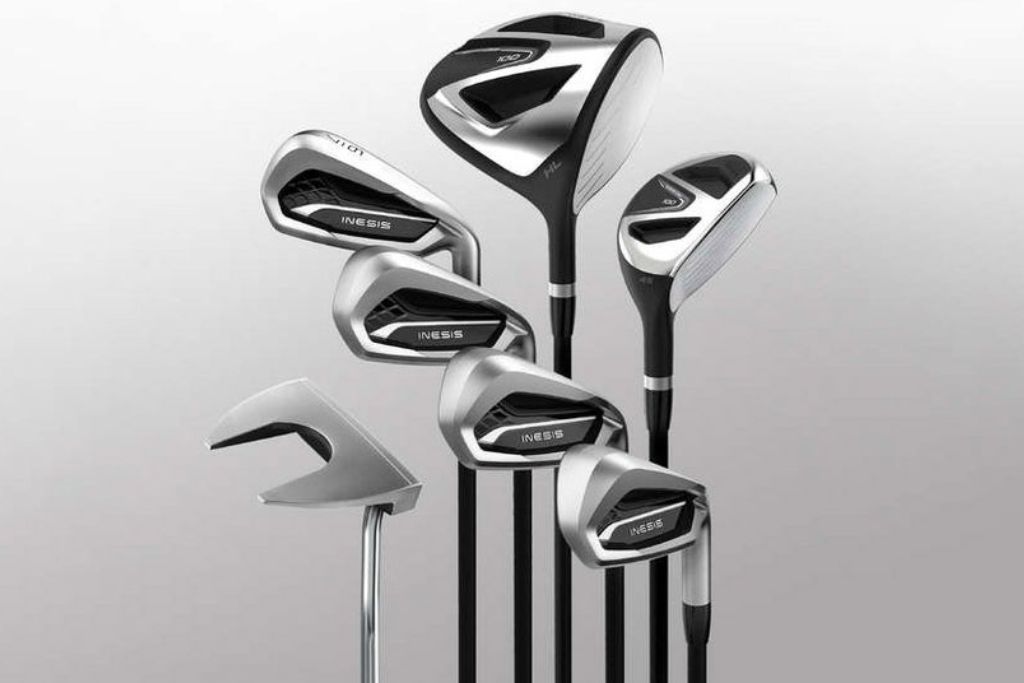
Welcome to the exciting journey of golf for beginners! Selecting the right golf clubs is essential for novices. The choice of clubs can greatly influence your learning curve and enjoyment of the game. Let’s dive into how to pick the best starter set for new golfers.
Starter Set Recommendations
As a beginner, choosing the right starter set can make all the difference. A typical set includes various types of clubs, each designed for specific shots.
- Drivers for long-distance tee shots.
- Irons, ranging from 5 to 9, for various distances.
- Wedges to navigate tricky shots around the greens.
- Putters for precision on the greens.
- Hollow Hybrid Clubs for versatility.
| Club Type | Use |
| Driver | Tee Shots |
| Irons | Various Distances |
| Wedges | Short Game |
| Putter | Putting |
A beginner’s set often includes a driver, one or two irons, a wedge, and a putter. “We tailor it to cover a full range of shots without overwhelming the new player.”
Investment Versus Rental Options
Investing in a golf club set or choosing rental options is a big decision.
- Purchase: Owning a set means personalized clubs and better consistency.
- Rental: Renting allows trying various clubs without commitment.
When starting, renting can be a cost-effective way to discover preferences. Yet, investing in a personal set benefits your long-term development. It ensures the clubs fit your specific needs and playing style.
For beginners, it’s wise to start with rentals. Then, as you progress, consider purchasing a set. This approach balances cost with the opportunity to grow and improve. A suitable set will offer the right mix of clubs to help beginners navigate the course with confidence and skill.
Senior Golfers: Choosing The Right Clubs
As we age, our golf game evolves. Senior golfers have unique needs when it comes to their golf clubs. Comfort, adaptability, and ease of use stand out as top priorities.
The correct clubs can enhance performance and ensure a pleasurable round. Let’s dive into the specifics of selecting the ideal golf clubs for senior players.
Considerations For Flexibility And Comfort
Flexibility in types of golf clubs is crucial for seniors. With a decrease in swing speed, the right shaft flex can compensate for lost power. Comfort also forms a cornerstone of the senior golfing experience. Clubs that reduce strain make the game more enjoyable and sustainable.
- Shaft Material: Graphite shafts, known for their flexibility, can significantly aid senior golfers.
- Grip Size: Proper grip size helps control and feel, reducing hand and arm fatigue.
- Club Weight: Heavier clubs can be cumbersome. Opt for lighter clubs to maintain a fluid swing.
Lightweight And Senior Flex Options
Choosing clubs designed for seniors is about finding that perfect balance between a lightweight feel and beneficial flex. Here, we’ll explore options engineered for the seasoned player.
| Club Type | Features | Benefits |
| Drivers | Lightweight, large sweet spot | Easier to hit, increased distance |
| Irons | Senior flex shafts, wider soles | Improved accuracy, less turf drag |
| Hybrids | Flexible shafts, shallower faces | Better for tight lies, versatile use |
Pay attention to senior-specific models. Brands often design these with age-friendly flex and ergonomics in mind. Prioritize clubs that make the game easier, not harder.
Junior Golfers: Fitting Clubs For Kids
Choosing the right golf clubs for junior players is essential. Properly fitted clubs help young golfers learn faster. They make the game more enjoyable.
Clubs not suited to their size can hinder their development. Read on to learn how to select the perfect clubs for junior golfers.
Adjustable Junior Club Benefits
- Grow with the golfer: They adjust to changes in height.
- Cost-effective: No need to buy new sets frequently.
- Confidence booster: Good fits improve playing style.
- Perfect for learning: Can adapt to different skill levels.
Age-appropriate Club Selection
Age is a key factor in choosing golf clubs for kids. “We design clubs for different age groups.” Each group has a specific shaft flex, length, and weight. This ensures that young golfers swing comfortably and safely.
| Age Group | Club Type | Club Length | Shaft Flex |
| 3-5 years | Ultra-light | 20″-25″ | Junior |
| 6-8 years | Lightweight | 26″-30″ | Junior |
| 9-12 years | Performance | 31″-35″ | Junior/Teen |
Women’s Clubs: Specialized Choices
Ever peeked inside a female golfer’s bag? It’s filled with clubs specifically designed for women’s needs. These specialized choices ensure that women can enjoy the great game of golf comfortably and competitively. Let’s explore the types of clubs tailored for women and why these differences matter.
Differences In Women’s Golf Clubs
Women’s golf clubs boast unique features that cater to the average physicality and playing style of women golfers. Lighter materials and shorter shafts are common, aligning with women’s generally shorter stature and swing speeds.
- Shorter Shafts: Typically, women’s clubs are 1-2 inches shorter than men’s.
- Lighter Weights: These clubs use lighter materials to make swinging easier.
- Softer Grips: Smaller grips suit women’s typically smaller hands for better control.
- Higher Lofts: Extra loft helps to get the ball airborne more easily.
Customization For Female Golfers
Custom fitting plays a crucial role in optimizing a woman’s golf game. By tailoring clubs to their specific physical build and swing, women golfers can achieve better accuracy and distance. Trained professionals take measurements and observe swing patterns to suggest the best club fit.
- Height and Arm Length: We cut custom shafts to complement a player’s height and arm reach.
- Hand Size: We match grip sizes to hand measurements for a comfortable, secure hold.
- Swing Speed: We recommend flex options based on the speed and force of a player’s swing.
- Player’s Strength: We adjust the weight of the club to match a player’s strength and endurance.
Understanding The Bounce And Grind Of Wedges
Understanding the Bounce and Grind of Wedges plays a crucial role in golf. These features impact the interaction between the club and the turf. Getting to know how bounce and grind work can greatly improve a golfer’s short game. Choosing the right wedge for a specific situation can make all the difference.
Bounce Angle Influence On Shots
The bounce angle of a wedge is a key factor in shot execution. A higher bounce angle helps prevent the club from digging into soft turf or sand. This results in better contact and more control. Golfers opt for a lower bounce angle on firm surfaces for a cleaner strike.
- High Bounce Wedges: Ideal for soft conditions or steep swings.
- Low Bounce Wedges: Best for firm conditions or shallow swings.
- Mid Bounce Wedges: Versatile for varied conditions.
Grind Types For Various Conditions
A wedge grind refers to the shaping of the sole of the club. Different grind options suit various play styles and conditions. Understanding the grind can help a golfer choose a wedge suited for their typical course conditions and swing type.
| Grind Type | Feature | Best For |
| Full Grind | A wide sole with medium to high bounce. | Soft turf and bunkers. |
| Heel Grind | The material was removed from the heel for open-faced shots. | Tight lines and hard conditions. |
| Toe Grind | Material removed from the toe; may come with a reduced bounce. | Advanced players need versatility. |
| M Grind | The sole is ground down on the heel and toe. | Players make a variety of shots. |
The Importance Of Grip Selection

It’s crucial not to overstate the role grip selection plays in golf. A golfer’s only physical connection to the club is the grip. This means the right grip can greatly enhance control and feel during a swing. Let’s delve into the aspects that shape this vital link between you and your golf club performance.
Grip Material And Texture
Grip material and texture make a significant difference in how a golf club feels in your hands. Common materials include rubber, corded fabric, and synthetic materials, each providing unique tactile experiences and performance benefits under varying weather conditions. A textured grip can offer added stability, while a smoother one might provide more comfort.
- Rubber grips are versatile and comfortable, suited for most players.
- Corded grips give extra traction, ideal for sweaty hands or wet weather.
- Synthetics combine rubber and cord advantages, often for a softer feel.
Sizing The Grip To Your Hand
Proper grip size is a critical factor for all golfers. An incorrect grip size can lead to hand fatigue or a compromised swing. Use these guidelines for finding the right size:
| Hand Size | Grip Size |
| Small to Medium | Standard |
| Medium to Large | Midsize |
| Large to Extra Large | Oversize/Jumbo |
Measuring from the crease of your palm to the tip of your middle finger will help find your optimal grip size. Your fingers should barely touch the heel of your hand when holding the club.
Technological Aids: Golf Club Analyzers
In the pursuit of golf mastery, technology has become a powerful ally. Golf club analyzers are among the most innovative tools available to golfers today. These devices provide valuable insights into swing mechanics, enabling players to make informed adjustments.
Understanding how each club performs can lead to significant improvements in accuracy and distance. Let’s dive into how these sophisticated gadgets can enhance your golfing experience.
Gadgets For Swing Analysis
Various hi-tech gadgets now offer detailed swing analyses. These tools capture data on swing speed, club path, face angle, and impact precision. They use sensors that attach to the club or glove and usually pair with a smartphone app. Feedback is immediate, showing players exactly what adjustments to make.
- 3D Swing Trackers: Capture the full range of motion.
- Impact Recorders: Analyze the point of contact between the club face and ball.
- Wearable Sensors: Monitor body movements and sync with clubs.
Improving Your Game With Tech
Embracing technology helps golfers of all skill levels sharpen their game. With concrete data from golf club analyzers, you can:
- Identify Weaknesses: Spot specific areas needing work.
- Earn Consistency: Track progress and achieve a more consistent swing.
- Ongoing Improvement: Keep refining your tactics with up-to-date analytics.
The right technological aids turn guesswork into a science. Smart practice leads to better performance on the course. Unlock your true potential with the power of golf club analyzers.
Antique And Collectible Clubs
Imagine holding a piece of history in your hands. Antique and Collectible Clubs are not just tools for the game. They tell stories of golf’s past. These clubs are treasures, sought after by enthusiasts around the world.
Let’s explore the allure behind these historical pieces and what makes them so special.
Collecting Vintage Golf Clubs
Collectors find joy in the hunt for vintage golf clubs. Each club has its narrative and charm. Searching for these can be as thrilling as hitting the perfect shot. Here are key points collectors consider:
- Club Maker: Famous makers’ pieces are highly prized.
- Rarity: The fewer the clubs, the more valuable.
- Condition: Well-preserved clubs can fetch higher prices.
- Age: Generally, the older, the better.
- Authenticity: Original pieces are essential to collectors.
The Historical Significance Of Classic Designs
Each old club carries its legacy. The designs reflect the era and the technology of the time. They reveal evolution and craftsmanship. The most significant classic designs include:
| Club Type | Significance |
| Hickory Woods | Symbolize early golfing days. |
| Forged Irons | Showcase traditional iron forging. |
| Putters | Illustrate the precision of past greens. |
| Baffies | Represent ingenuity in vintage lofts. |
Collectible clubs open a window into the bygone days of golf. They speak of players, famous tournaments, and the gradual changes in the sport. Owning one is like keeping a piece of history alive.
Frequently Asked Questions On Types Of Golf Clubs
How Many Different Clubs Are There In Golf?
There are 14 different clubs allowed in a golfer’s bag during a round, according to the rules of golf. These include a mix of woods, irons, wedges, and a putter.
What Are Golf Clubs Called?
We categorize golf clubs as woods, irons, wedges, and putters. Each type serves a different purpose on the course, aiding players in various shots.
What Are The Three Types Of Clubs?
The three types of clubs are wood clubs, iron clubs, and putters. Each type serves different purposes in the game of golf.
How Many Types Of Irons Are There In Golf?
We typically use two main types of irons in golf: cavity back and muscle back (blade) irons. There are also variations like game improvement and players’ irons for different skill levels.
What Different Golf Clubs Are Used For?
We design golf clubs for various shots: drivers for tee shots, irons for the fairway, wedges for short-range, and putters for the green.
Conclusion
Exploring the various types of golf clubs is key to mastering the game. Each club has a unique purpose to enhance your play on the course. Remember, the right selection can transform an average game into a great one. Embrace the diversity in your bag and always aim for the perfect swing.

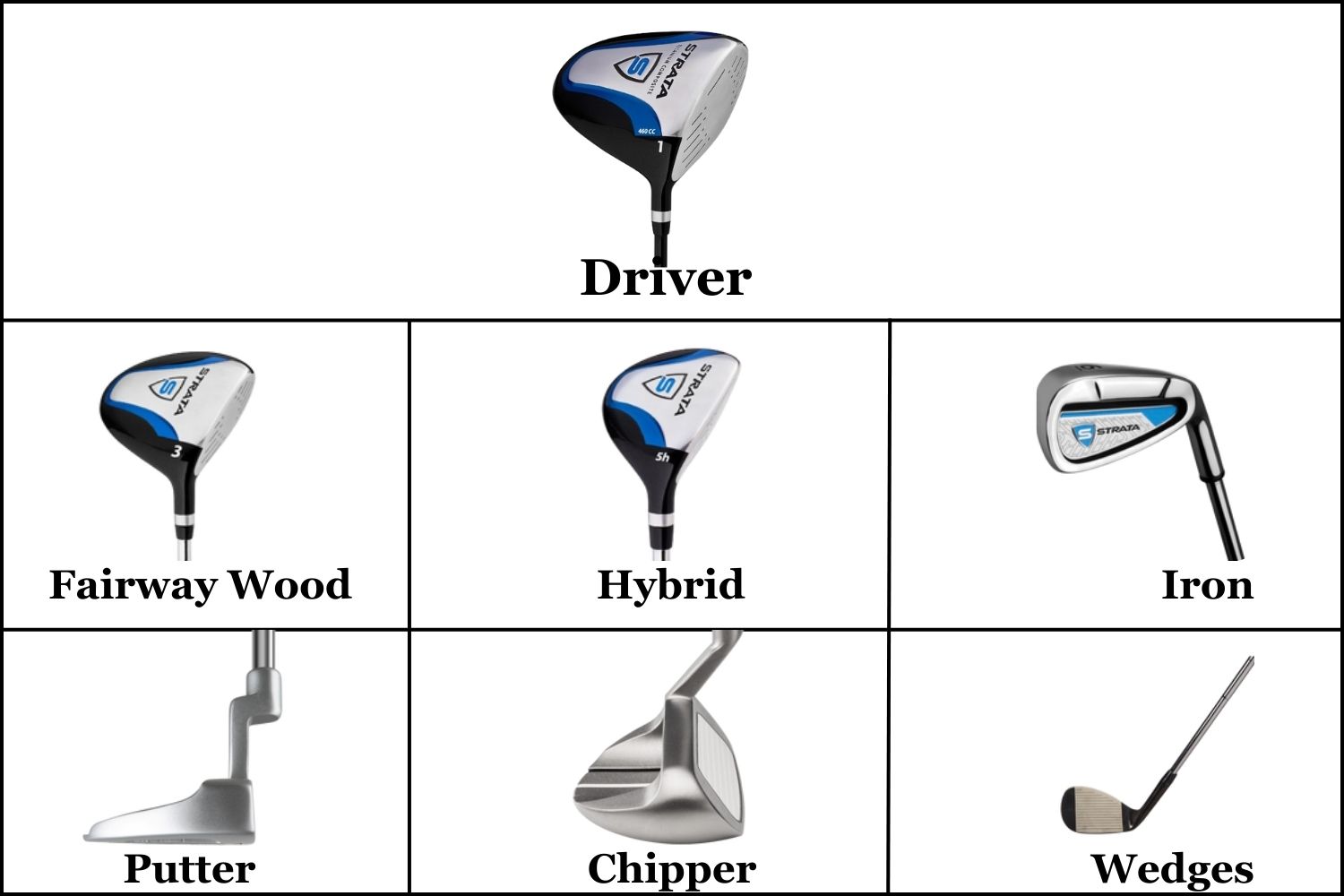

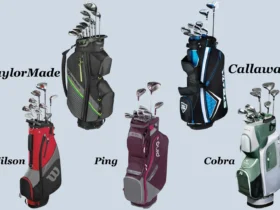
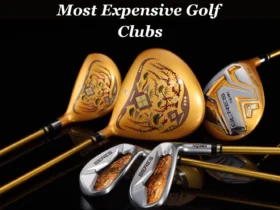


Leave a Reply